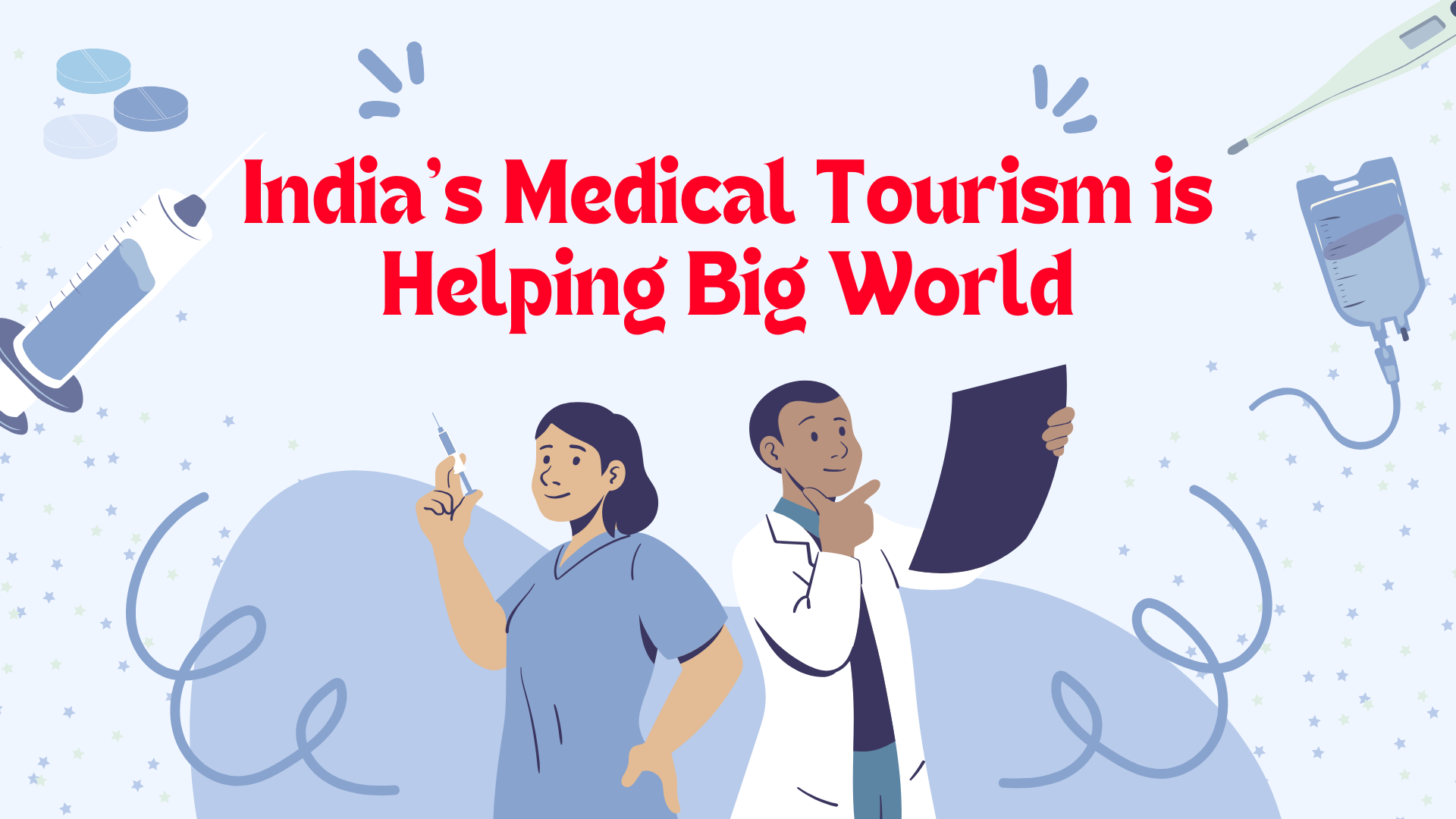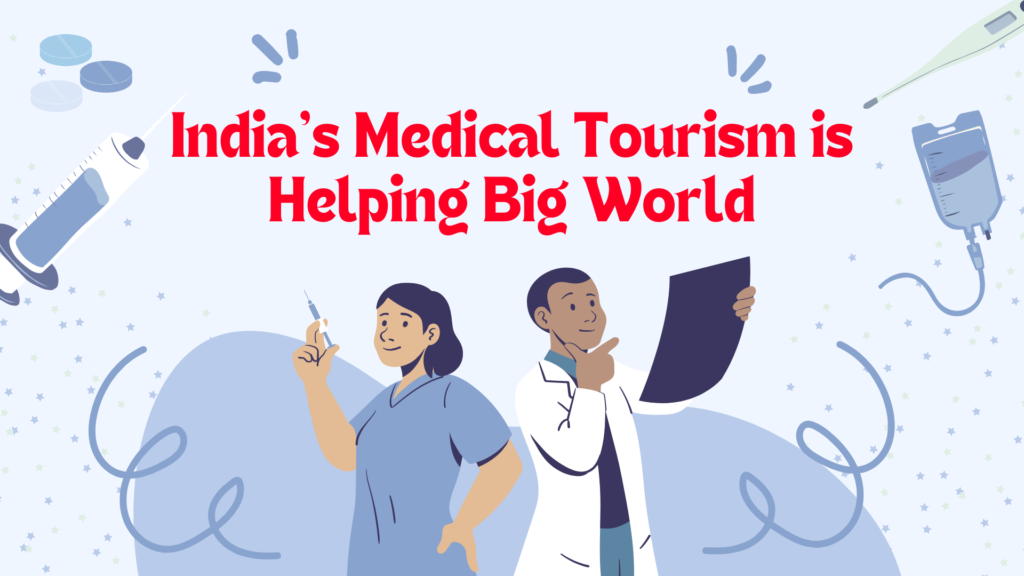

How India’s Medical Tourism is Helping Big World. India has emerged as one of the leading destinations for medical tourism, attracting millions of international patients every year. Medical tourism refers to the process of traveling across borders to access quality healthcare, often at a lower cost compared to one’s home country. With its combination of world-class doctors, advanced medical technology, and affordable treatment options, India’s medical tourism industry is growing rapidly, positioning the country as a global healthcare hub.
Also Read; What is Brent Crude and Why Its Important ?Brent crude oil
Why Medical Tourism in India is Important
Medical tourism is not just about healthcare services; it is also an important pillar of India’s economy. Patients from countries such as the United States, the United Kingdom, Africa, the Middle East, and South Asia travel to India for a wide range of treatments, including cardiac surgery, organ transplants, fertility treatment, cosmetic surgery, orthopedics, and Ayurveda therapies.
India’s strength lies in:
- Skilled doctors and surgeons trained internationally.
- Hospitals accredited by JCI and NABH, ensuring global standards.
- Integration of modern and traditional medicine, offering holistic healing.
- Fast treatment access with minimal waiting time compared to developed nations.
This not only supports India’s healthcare sector but also boosts tourism, hospitality, and the overall economy.
How India’s Medical Tourism is Helping Big Nations
Medical tourism in India is not only beneficial for the country but also plays a vital role in supporting developed nations that face challenges in their healthcare systems. Many big nations, such as the United States, Canada, the United Kingdom, and countries in Europe, struggle with high healthcare costs and long waiting times for critical treatments. India provides them with an effective solution.
1. Reducing Healthcare Burden
In countries like the US and UK, patients often wait months for surgeries such as knee replacements, cataract removal, or cardiac operations. By traveling to India, these patients get immediate access to world-class treatment, reducing the healthcare burden on their home systems.
2. Affordable Alternative
Medical procedures in India cost a fraction of what they do in developed nations. For example, a heart bypass surgery in the US may cost over $100,000, whereas the same procedure in India can be done for less than $10,000 with equal or better medical outcomes. This affordability helps patients from big nations who are uninsured or underinsured to access critical healthcare.
India is the cost savings. Treatments in India are often 60–80% cheaper than in developed countries without compromising on quality.
For example:
- Heart Bypass Surgery:
- USA: $100,000
- India: $7,000–$10,000
- Knee Replacement:
- UK: $35,000
- India: $6,000–$7,000
- Cosmetic Surgery:
- Europe: $10,000+
- India: $2,000–$3,000
These significant savings, coupled with internationally recognized healthcare standards, make India a preferred destination.
3. Specialized and Advanced Treatments
India is home to globally renowned surgeons, advanced hospitals, and cutting-edge technologies such as robotic surgery, organ transplants, and fertility treatments. Many patients from developed nations travel specifically to India to receive treatments that might be either unavailable or extremely expensive in their own country.
Also Read; शून्य निवेश; बिजनेस आइडिया और निष्पादन रणनीति रणनीति
4. Strengthening Global Healthcare Cooperation
India’s rise in medical tourism also fosters international cooperation. Many large nations are now partnering with Indian hospitals and healthcare institutions for knowledge sharing, medical training, and joint research. This helps strengthen global healthcare standards.
5. Promoting Wellness Beyond Medicine
Apart from modern medical treatments, India also offers Ayurveda, Yoga, and holistic therapies that attract patients from developed nations seeking preventive healthcare and wellness solutions. This helps address lifestyle-related illnesses such as stress, obesity, and hypertension, which are common in big economies.
How Medical Tourism Benefits India
The growth of medical tourism creates a positive multiplier effect in multiple sectors:
- Healthcare Infrastructure: Hospitals invest in advanced technology and world-class facilities.
- Employment Generation: Doctors, nurses, technicians, and hospitality staff benefit.
- Tourism Industry: Patients often combine treatment with travel, boosting local tourism.
- Foreign Exchange Earnings: The industry contributes billions of dollars annually to India’s economy.
Additionally, India’s reputation as a reliable healthcare provider improves its global soft power.
Future Outlook of India’s Medical Tourism
The future of India’s medical tourism looks highly promising. According to industry reports, the Indian medical tourism market is expected to reach $13 billion by 2026, with double-digit annual growth.
How India’s Medical Tourism is Helping Big World, Key drivers for future growth include:
- Digital Healthcare & Telemedicine: Pre-consultations and follow-up care through online platforms.
- Government Initiatives: Programs like Heal in India and Ayush Visa to simplify medical travel.
- Alternative Medicine Growth: Rising demand for Ayurveda, Yoga, Unani, Siddha, and Homeopathy (AYUSH).
- Wellness Tourism: Combining medical care with rejuvenation, wellness, and preventive health practices.
If supported by stronger medical visa policies, better international marketing, and improved infrastructure, India can become the world leader in medical tourism. How India’s Medical Tourism is Helping Big World.



